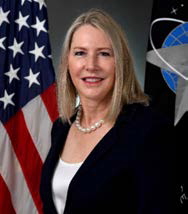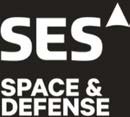USSF CTIO examines advancements in space-based AI
In October of 2023, President Biden released an Executive Order (EO) dedicated to the safe, secure, and trustworthy use of artificial intelligence (AI).

Within this EO, the President ordered the development of a National Security Memorandum that “…will ensure that the United States military and intelligence community use AI safely, ethically, and effectively in their mission, and will direct actions to counter adversaries’ military use of AI.”
This EO could not have arrived at a timelier moment in the U.S. ,as near-peer competitors are currently making major investments in AI space capabilities that pose a growing threat to the nation’s dominance and advantage in the space domain.
The U.S. government and military are highly aware of adversaries’ investments in space-based AI military capabilities and are turning to the U.S. Space Force (USSF) to answer the call to defend American assets in space by building its own AI capability set.

Dr. Lisa Costa
The Mitchell Institute for Aerospace Studies recently hosted Dr. Lisa Costa, Chief Technology and Innovation Officer (CTIO) of the United States Space Force (USSF), at a Schriever Spacepower Forum to examine the AI advancements adversarial nations have made in the space domain and to outline how the Space Force will maintain a technological advantage over U.S. near-peer competitors.
As CTIO of the Space Force, Dr. Costa oversees the development of strategy and policy to advance science, technology, and research of cutting-edge technologies that will digitally transform the Space Force. She is also responsible for leading teams working on the advancement of AI in the space domain, as well as determining the AI capabilities adversarial nations such as China are currently fielding and deploying in the domain.
China + AI
Dr. Costa opened the forum by discussing China’s approach to leveraging AI and Machine Learning (ML) in space. She explained that, in 2023, China is projected to spend $14.7 billion on AI, and that by 2026, that figure will increase to $26 billion.
“That’s an extremely large investment,” said Dr. Costa. “Not only are they applying that to AI research, they’re applying it to the operationalization of AI.”
She explained that, according to a recent Pentagon report to Congress, China is focused on AI domination in order to probe enemy vulnerabilities and advance the concept of intelligentized warfare.
From applications to robotics, China is seeking to develop an autonomous, orbital platform in space that can make determinations on who is and isn’t an adversary through AI technologies. Through these investments in AI, China is effectively constructing an enhanced counter-space capability set.
“The People’s Republic of China (PRC) argue that the increasing frequency, complexity, and risks of space missions raise the need for incorporating AI and autonomy to support and protect China’s space assets,” she explained. And according to Dr. Costa, China is already testing and fielding these space-based capabilities.
In April of this year, China held an experiment where they allowed an autonomous AI to control and operate a camera on an optical satellite for 24 hours. The test results revealed that the AI focused on two main areas: a region in Japan that houses U.S. aircraft carriers, as well as a contentious zone between India and China that is known to have “skirmishes.”
According to Dr. Costa, these demonstrations and tests make it clear that China has — and will continue to pursue — new, space-based capabilities that can threaten the U.S.’ advantage in the domain.
What Is The Space Force’s Answer To This Growing Threat?
To keep up with the pace of China’s growing AI capability set, the USSF is focusing on the digital transformation and modernization of the organization’s existing space assets.
“A lot of people think that because we are a new service, we got all new equipment,” said Dr. Costa. “Well, that’s not quite true.” Dr. Costa explained that the USSF has several satellite constellations that are currently operating on older networks.
“Working to modernize those capabilities is absolutely critical,” said Dr. Costa. “It’s very difficult to build incredibly advanced AI modeling, simulation, and digital twins on top of old infrastructure.”
According to Dr. Costa, her office’s first priority is to fix the “tech debt” of its system and network foundations in order to accommodate the amount of data throughput and processing that is required to have a space-based advantage.
Another priority that Dr. Costa’s office is focusing on is upskilling current Space Force guardians to be “super coders.”
Equipping guardians with the knowledge and skills to augment capabilities and systems through coding is a major advantage for the U.S., according to Dr. Costa.
“That combination of modernization of the foundation, with the real-time changes to capabilities by super coders, is a huge game changer,” said Dr. Costa.
AI + Data
One space-based challenge that both the U.S. and China share — as it pertains to space — is the quantity and quality of data that they must analyze.
“It’s a common problem that cuts across all of these areas, not only for China, but for us as well,” said Dr. Costa. However, in Dr. Costa’s opinion, the data issue is one that is going to be fixed soon.
“I fundamentally believe this is going to be a very solved problem very quickly,” she said. “Why do I believe that? Machine learning and natural language processing are at a point now that computer-based tagging of large amounts of information, in real-time, is possible.”
Dr. Costa explained that computer systems and applications are more consistent and more efficient at marking up data than humans.


“I believe this is going to be a real game changer in terms of being able to use AI in the operational space,” said Dr. Costa.
To hear more from Dr. Costa on how the U.S. Space Force is leveraging data and space-based AI capabilities to maintain a competitive edge in the space domain, click the video below.

This article was first published on GovSat and is republished with permission of GovSat and SES Space & Defense.
Author David Pesgraves is a Staff Writer for GovSat Report, in addition to several other online publications dedicated to defense, military, and federal government agency technologies.

